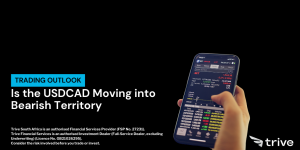
The USDJPY pair finds itself trapped in a tight battleground, caught between the Bank of Japan’s ultra-loose monetary policy and mounting expectations of US Federal Reserve rate cuts. The BoJ’s recent decision to maintain its ultra-loose monetary policy, coupled with Governor Kazuo Ueda’s dovish stance in the press conference, continues to weaken the JPY. The central bank’s commitment to negative interest rates and the potential for further easing measures keeps the JPY on the back foot.
Market participants are increasingly pricing in the possibility of the Fed initiating rate cuts as early as March 2024, fuelling speculation that the dollar’s rally might fade soon. This expectation puts downward pressure on the USD, creating a counterbalance to the BoJ’s dovishness. The upcoming release of the Core Personal Consumption Expenditures (PCE) price index, the Fed’s preferred inflation gauge, on Friday, holds significant weight. Lower-than-expected inflation could solidify rate cut bets, further weakening the USD and potentially benefiting the JPY.
The prevailing risk-on sentiment, driven by easing recession fears, acts as a headwind for the safe-haven JPY and lends some support to the USDJPY pair. However, a shift in sentiment could quickly change the equation.
Technical
The 4-hour chart shows that the USDJPY, at 143.725, aligns with the 50-SMA (blue line), trading above the upward-sloping 20-SMA (green line) and below the downward-sloping 100-SMA (orange line). The near-flat RSI at 53.59 indicates neutrality, neither supporting a strong bull nor bear case. However, the upward-sloping RSI-based MA at 50.85 likely hints at a slight bullish bias.
Short-term trading opportunities could exist towards the resistance level at the 144.819 price level should the bulls sustain a push above the 50-SMA. A break above the initial resistance could confirm the bullish momentum, likely bringing the 146.519 resistance level into play. However, short-term trading opportunities could arise towards the initial support at 142.507 should the 50-SMA hold. A break below the 142.507 level would likely bring the 141.215 support level into play in the short term.

Summary
The USDJPY pair faces a tightrope walk, balancing the dovish BoJ against easing Fed bets. Upcoming US inflation data and risk sentiment will likely dictate the near-term direction. Technically, the price action is stuck between key moving averages, hinting at a potential breakout in either direction. Short-term trading opportunities could emerge towards resistance or support levels depending on the price action’s breakout direction.
Sources: TradingView, Reuters, Bank of Finance, Japan, Dow Jones Newswire.
Piece written by Mfanafuthi Mhlongo, Trive Financial Market Analyst
Disclaimer: Trive South Africa (Pty) Ltd, Registration number 2005/011130/07, and an Authorised Financial Services Provider in terms of the Financial Advisory and Intermediary Services Act 2002 (FSP No. 27231). Any analysis/data/opinion contained herein are for informational purposes only and should not be considered advice or a recommendation to invest in any security. The content herein was created using proprietary strategies based on parameters that may include price, time, economic events, liquidity, risk, and macro and cyclical analysis. Securities involve a degree of risk and are volatile instruments. Market and economic conditions are subject to sudden change, which may have a material impact on the outcome of financial instruments and may not be suitable for all investors. When trading or investing in securities or alternative products, the value of the product can increase or decrease meaning your investment can increase or decrease in value. Past performance is not an indication of future performance. Trive South Africa (Pty) Ltd, and its employees assume no liability for any loss or damage (direct, indirect, consequential, or inconsequential) that may be suffered from using or relying on the information contained herein. Please consider the risks involved before you trade or invest.




